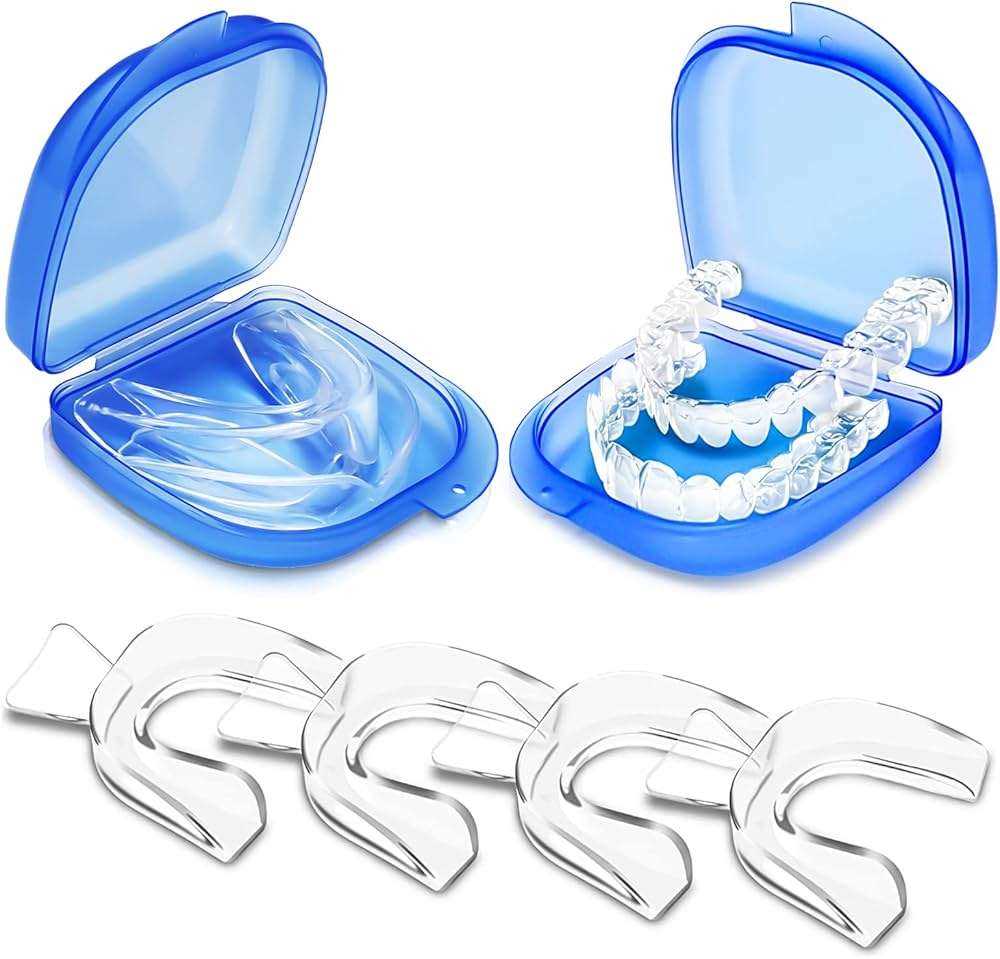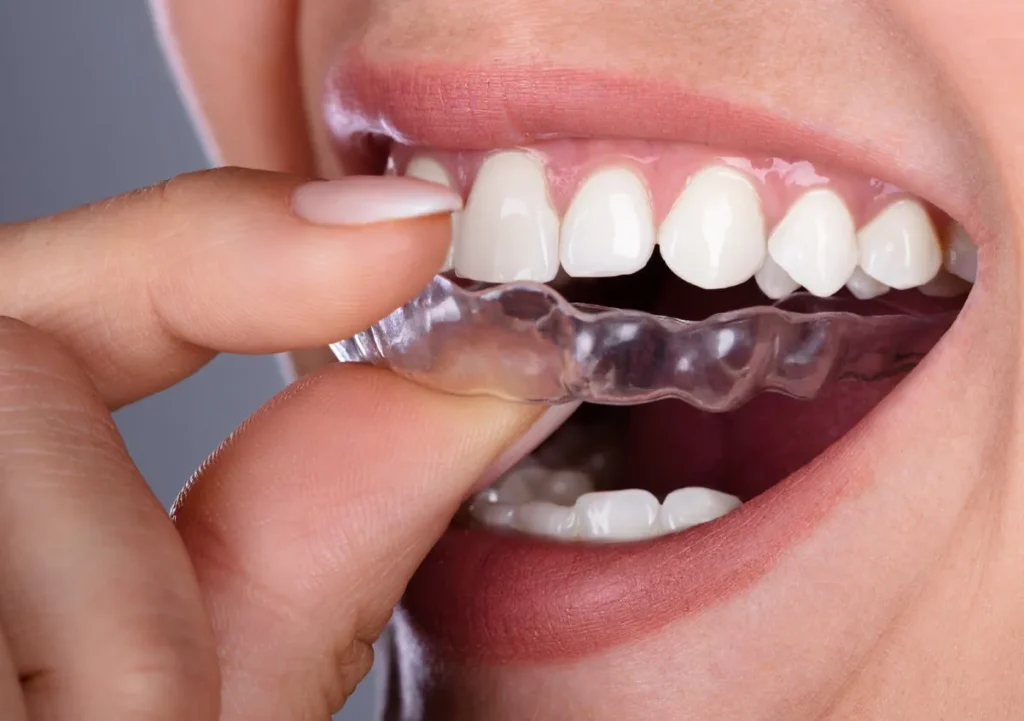This might be a sign of *Teeth Grinding, medically known as Bruxism. Often occurring involuntarily during sleep, Bruxism can lead to jaw discomfort, headaches, and long-term dental damage. Studies suggest that approximately 10% of adults and 15% of children worldwide experience Bruxism (source: American Academy of Sleep Medicine). In this article, we explore its causes, symptoms, risk factors, diagnosis methods, treatments, and preventive measures.
For a broader understanding of modern dental practices that address issues like Bruxism, explore our article on Modern Dentistry Services, Treatments, and Innovations.
What Is Teeth Grinding (Bruxism)?

Bruxism refers to the involuntary clenching or grinding of teeth, often caused by emotional or physical triggers. It can occur during wakefulness (Awake Bruxism) or while sleeping (Sleep Bruxism). Without intervention, it can result in worn or fractured teeth, jaw pain, and other complications.
Symptoms of Teeth Grinding
Detecting the symptoms early is essential for preventing further complications. Common indicators include:
- Jaw stiffness or soreness
- Morning headaches
- Ear discomfort or pain
- Tooth sensitivity to temperature changes
- Worn-down, chipped, or fractured teeth
- Pain while chewing food
- Sleep disturbances or grinding sounds during sleep
If you notice these symptoms, don’t hesitate to schedule a consultation. Learn more about the importance of Regular Dental Checkups and how they help identify and prevent complications.
Main Causes of Teeth Grinding
Several factors contribute to the development of Bruxism:
- Stress and Anxiety: Emotional tension is the leading cause of teeth grinding, particularly in adults.
- Sleep Disorders: Conditions such as sleep apnea increase the likelihood of Bruxism during sleep.
- Dental Misalignment: Improper positioning of teeth can trigger grinding and clenching.
- Substance Use: Consuming alcohol, tobacco, or caffeine exacerbates the condition.
For tips on maintaining overall oral health to prevent disorders like Bruxism, check out our Healthy Diet Guide for Teeth.
How Is Bruxism Diagnosed?

Diagnosing Bruxism involves multiple steps:
- Physical Examination: Dentists evaluate teeth for wear, fractures, and alignment, and assess the jaw for tightness or clicking.
- Patient History: Questions about sleep patterns, stress levels, and substance use help identify causes.
- Specialized Tests: Imaging like X-rays or sleep studies (e.g., polysomnography) can provide further insights.
For an in-depth look at the latest diagnostic and treatment methods, read our article on Cutting-Edge Dental Innovations.
Risk Factors for Bruxism
Certain characteristics increase susceptibility to teeth grinding:
- Age: Children, especially under the age of three, are more likely to experience Bruxism.
- Personality Traits: Individuals with aggressive, competitive, or hyperactive temperaments are at higher risk.
- Medications: Antidepressants and other drugs may list Bruxism as a side effect.
- Family History: A genetic predisposition to grinding is common.
- Associated Conditions: Disorders such as GERD, Parkinson’s disease, ADHD, or dementia are linked to Bruxism.
Since several factors contribute to Bruxism, treatment approaches should be tailored to each individual’s condition.
Treatment Options for Teeth Grinding

A variety of strategies can address Bruxism based on the individual’s needs:
Dental Solutions:
- Mouth Guards: Custom devices prevent damage during sleep.
- Dental Restoration: Corrective measures for damaged teeth and alignment.
Psychological Methods:
- Stress Reduction: Activities like therapy, meditation, or yoga help manage stress.
- Behavioral Adjustments: Awareness training to stop habitual clenching or grinding.
Biofeedback Therapy:
Monitoring devices teach users to control their jaw muscle activity.
Medications:
- Muscle relaxants to ease tension.
- Botox injections for chronic grinding.
- Anti-anxiety medications to relieve emotional stress.
Root Cause Management:
- Adjusting medications contributing to Bruxism.
- Addressing sleep disorders or GERD effectively.
For further details about protecting your teeth and maintaining oral health, refer to our comprehensive Tooth Decay Prevention Guide.
Preventive Measures for Bruxism

Prevention plays a critical role in minimizing the risks of teeth grinding:
- Adopt relaxation techniques to reduce stress and anxiety.
- Avoid stimulants such as caffeine and alcohol before bedtime.
- Establish consistent and healthy sleep routines.
- Maintain regular dental check-ups to monitor dental health.
- Correct dental misalignments to minimize clenching risks.
Explore our guide on Choosing the Perfect Toothbrush to improve your overall oral hygiene routine.
Conclusion
Bruxism is a common yet often underestimated condition that can lead to significant dental and jaw issues over time. Timely diagnosis and treatment are essential to prevent lasting damage. Consulting a dentist at the first sign of grinding and adopting healthy habits, such as stress management and regular dental visits, can significantly enhance your quality of life.
Remember: Caring for your dental health not only prevents Bruxism-related complications but also improves sleep quality and overall well-being. For personalized assistance, contact us via our Contact Page to schedule your consultation
